In a quiet suburban garage in Allied Gardens, a master luthier is constructing guitars for some of the world’s most well-known musicians.
Brandon Madrid strummed his first tune on a neighbor’s guitar at age seven. He was instantly hooked, so his parents got him a Spanish classical instrument as a gift. Madrid immersed himself in the world of guitars through magazines, tablature, and records from hair metal bands like Kiss and Quiet Riot.
Madrid’s neighbor also introduced him to woodworking, and Madrid began crafting non-functional instruments out of foraged supplies. “I built a drum kit out of scrap wood that virtually didn’t make any acoustic sounds, but I could hit it and it felt like a drum kit,” Madrid recalls. These early ventures laid the groundwork for his future career as a luthier.
As a young adult, working an office job, Madrid sought a creative outlet. He began repairing broken guitars he found in nickel ads before progressing into full guitar builds. One day, he brought in a guitar kit he created into a local luthier for inspection. The expert was immediately impressed with his work. He recommended that Madrid go to school to become a luthier, and soon after, Madrid was introduced to one of the godfathers of American guitar building—Charles Fox. He became Madrid’s teacher and mentor.
With guidance from Fox, Madrid began crafting guitars—from beautiful mahogany acoustics to twangy, solid-body electrics—for clients under his own banner, Madrid Guitars. Before long, Madrid was building and re-building instruments for some of rock and indie’s biggest bands, including The Smiths, Modest Mouse, The Killers, and Death Cab for Cutie. He also toured as a guitar technician for Spoon and The Shins before settling into his Allied Gardens workshop.
With more than 25 years of experience under his belt, Madrid is now one of San Diego’s most knowledgeable guitar experts. We tapped him to share his best advice for people looking to invest in their first set of strings.
Here’s what he had to say:
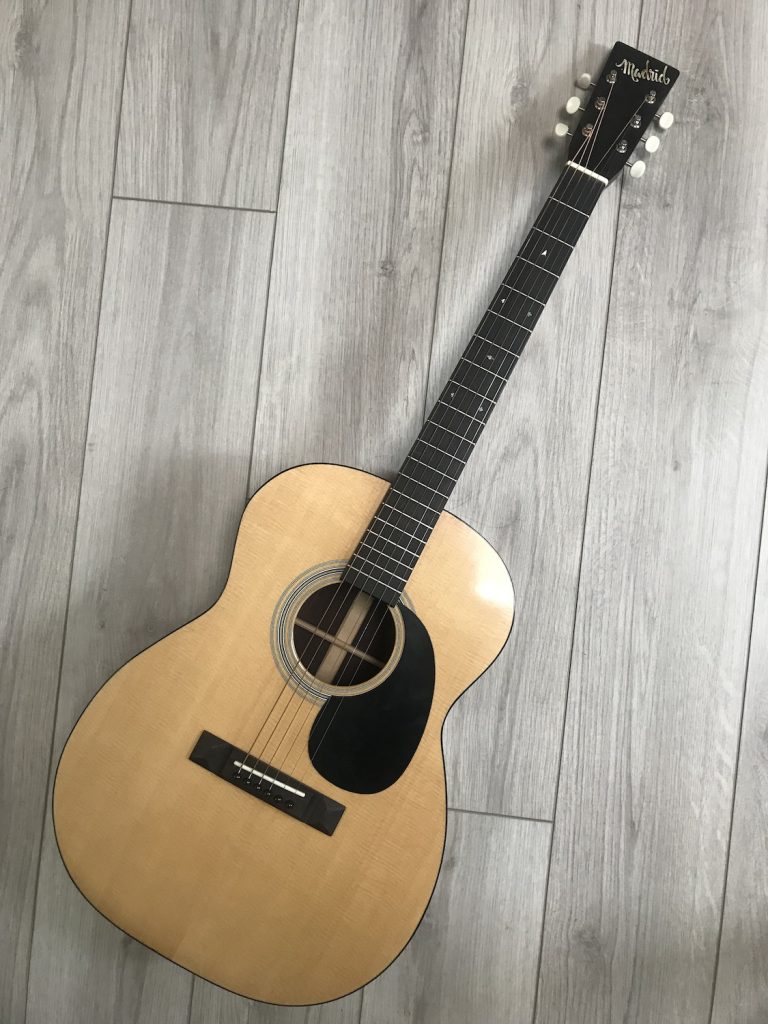
How Much to Spend on Your First Guitar
“Price is a big deal,” Madrid emphasizes. While a beginner’s first instrument might not be a long-term investment, those looking for a solid starter guitar can get a better value (and a nicer instrument) by buying used, as new guitars depreciate like cars driven off the lot. Madrid suggests spending in the $400 to $500 range for a first guitar.
He also recommends asking a luthier to inspect your purchase within the return window provided by most major retailers like Sweetwater and Reverb. This inspection ensures that imperfections or factory defects, often unnoticed by new players, won’t impact the guitar’s playability or longevity.
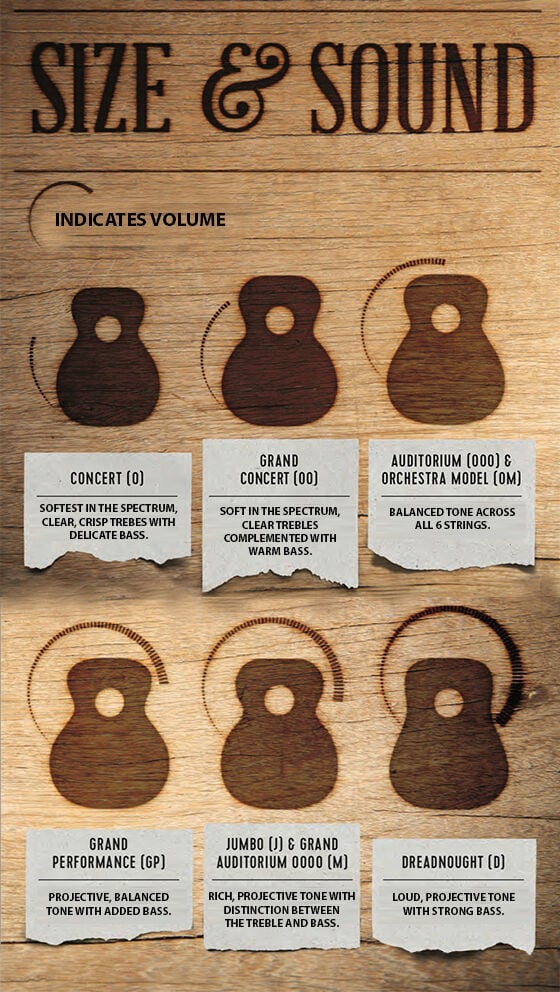
What to Look for in Guitar Shapes and Bodies
When it comes to guitar shapes, Madrid generally recommends “smaller-body parlor, or 0 or 00 guitars, [since] they’re easier to hold,” he says. “Parlor” guitars are designed to be compact enough to play in one’s parlor or in other cozy, group settings. 0 and 00 instruments are also referred to as “concert” and “grand concert” guitars, respectively, with both being less than 15 inches wide.
While the differences in sound imparted by different body shapes might not be apparent to beginners, novices will have trouble forming chords and navigating the neck if their instrument isn’t comfortable to hold. Resist the urge to get drawn into the “most romantic aspect[s] of picking a new guitar,” Madrid says, like its color or similarity to a favorite musician’s instrument. Instead, find a practical choice that suits your size and experience.
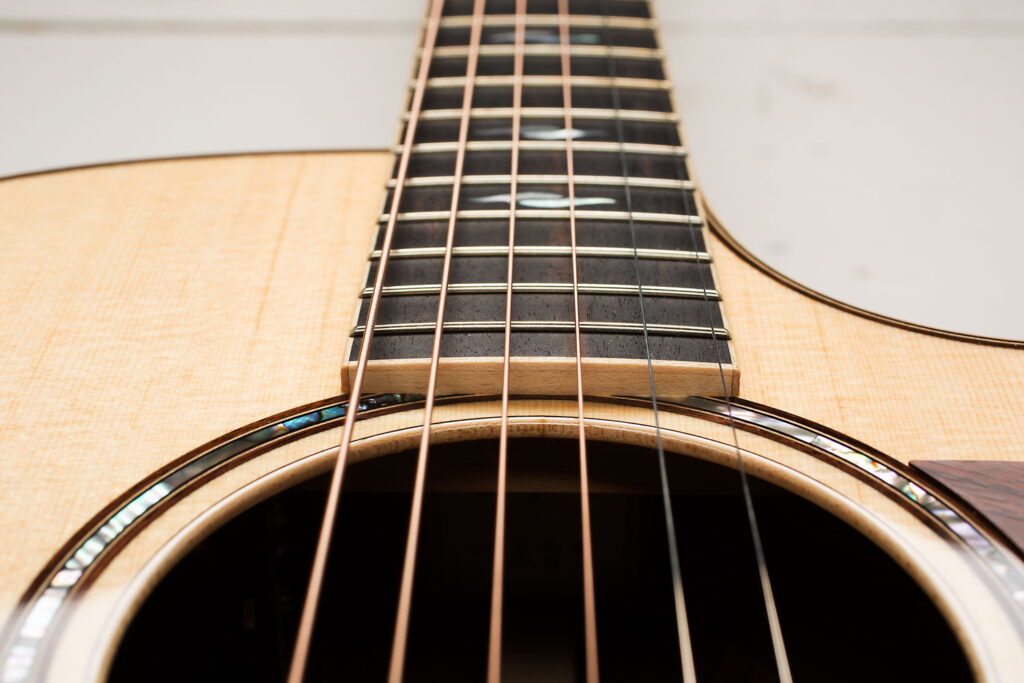
What Neck Size Should You Look For?
Madrid suggests opting for acoustic guitars with smaller necks. “They’re not as cumbersome and intimidating,” he says. While wide necks can be ideal for players with larger hands, a narrower fretboard allows new players to hold the guitar better, form chords easily, and traverse the fretboard freely. Madrid says that slender necks “might not aesthetically be something that [you’re] into, but know that it will be a great instrument to learn on.”
Best Brands for Acoustic Guitars
Apart from Madrid Guitars (obviously), Brandon recommends Martin, Gibson, and Taylor Guitars for newcomers. Each of these “brands have less expensive sub-brands,” he explains, which are an easy entry point for first-time buyers. Popular entry-level models include Martin’s Little Martin series (which Ed Sheeran strums in front of sold-out arenas), Gibson’s Epiphone line J-15 EC (made of mahogany, with a round shoulder for comfort), or Taylor’s academy series (these guitars feature a narrower neck and start at $399).
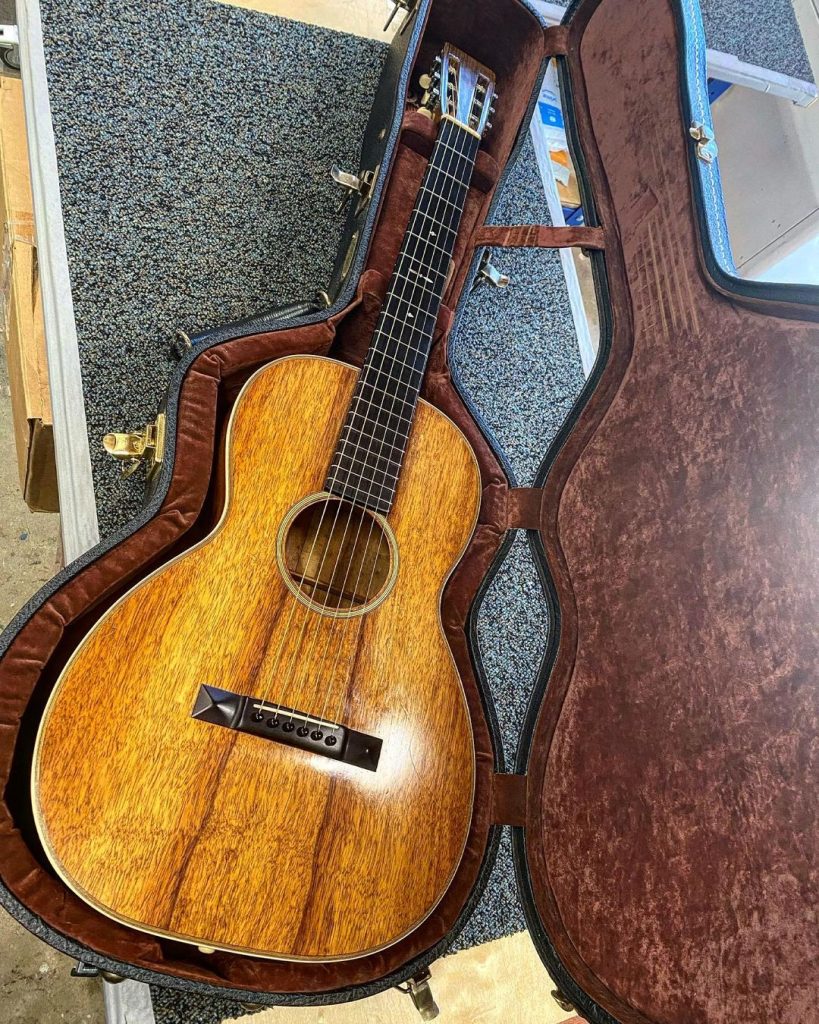
What to Look For in Tonewoods
Tonewoods refer to the materials used to produce a guitar’s body. While tonewood isn’t typically a determining factor for beginner guitar shopping, the type of wood, and specifically its density determines how your guitar sounds and interacts with the vibrations of your strings.
Soft tonewoods allow for more vibrations which result in a brighter sound with louder volume compared to denser woods like walnut which generally produce less volume and offer warmer midtones that advanced guitarists sometimes prefer.
“Tried-and-true [tonewoods are] always mahogany and rosewood,” Madrid says. While mahogany is more affordable, it still provides an excellent timbre. “Even Jeff Tweedy [of Wilco] plays a lot of mahogany guitars, because he’s looking for that tone,” Madrid explains.
Most entry-level guitars are made with spruce and cedar, but other popular tonewoods include alder, koa, ebony, sapele, and walnut.
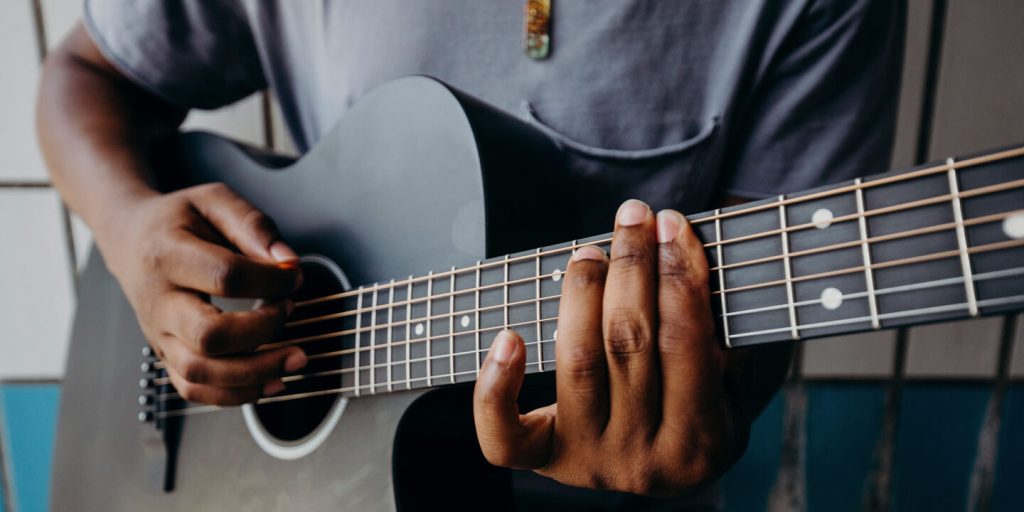
Best Strings and Gauges for Acoustic Guitars
For beginners, string choice generally has a greater influence on a guitar’s sound than tonewood. The nylon strings typically found on classical guitars provide a plucky, mellow tone, while metal strings offer a rich, warm sound that most new guitarists seek. Even if you’re just starting out, you should “change your own strings, learn about the different gauges [or thicknesses], and see how they sound and feel on your fingers,” Madrid says.
Lighter gauge strings press down more easily and are more flexible (making it simpler to bend the strings and change a note’s pitch), whereas heavier strings create a fuller, bassier sound. Buy a few different brands and play around to find your favorite tones.
Acoustic guitar strings typically perform best in the .011- to .013-millimeter range, which is generally thicker than strings found on electric guitars.
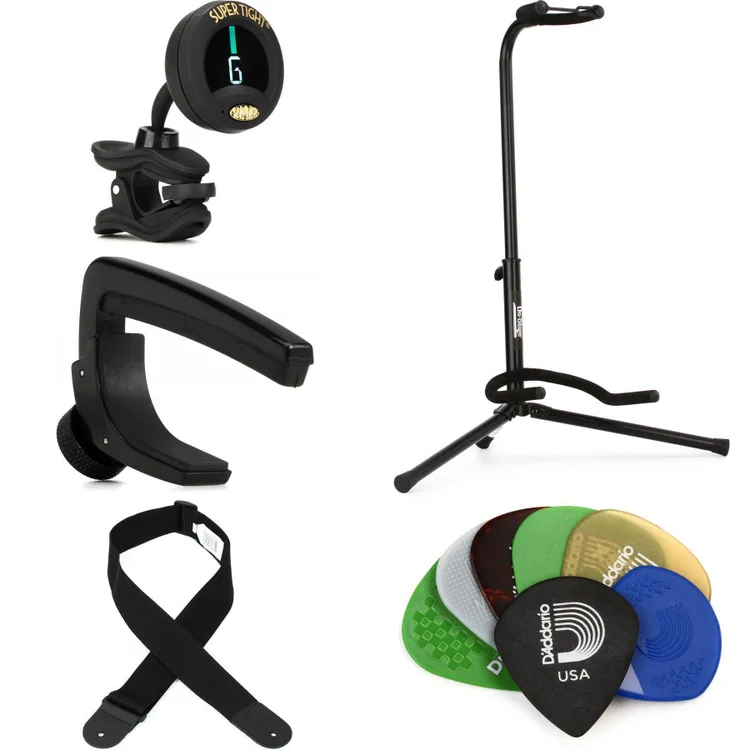
Beginner Guitar Accessories
In addition to a beginner guitar, Madrid recommends purchasing essential accessories like a capo, a strap, and picks. Picks come in various materials and thicknesses—to start, you should have one each of “soft, medium, and stiff picks,” Madrid says. Softer picks are ideal for strumming, since they create less resistance against your strings, whereas a stiffer pick helps you pick individual strings in rapid succession with greater accuracy.
Bonus Tip: Utilize Online Guitar Lessons & Tools
Alongside traditional lessons, guitar students today can utilize a plethora of online resources, including virtual tutorials, video-call lessons, and an endless supply of guitar tablature on sites like Ultimate Guitar. “I’m a huge fan of YouTube because you can get some of the best instructors in the world for free on your time,” Madrid says.
PARTNER CONTENT
You should be practicing often. “[Dedicate] 15 to 30 minutes [to learning for] four to six days a week for a couple months, and you should be playing the guitar right,” Madrid says. “By three months, you should be able to play guitar in front of somebody, and, in a year, you should be able to play in a band.”
This post contains affiliate links to products and services. We may receive compensation when you click on links.


















